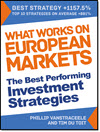Do you know what your biggest investment expense is?
If your first thought was brokerage costs, think again there is a FAR larger cost staring you in the face!
It is TAXES!
And, have you ever thought of how you can keep it as low as possible?
If not, this article can help.
The neglected largest investment expense
I am sure the same as me, deciding what to buy takes up all your time.
BUT the boring topic of taxes (your LARGEST investment expense) is neglected.
The stocks we own have wildly different returns. Some do great, others hardly anything, and others fall. For example, research has shown that about 36% of stocks in the US Russell 1000 Index deliver a negative return annually.
Losing investments can turn around, that is why you are still holding then I assume. But did you know you can use then to substantially lower your taxes?
Take a close look at those losses
Winding down each year gives us time to take a closer look at the stocks we own. And it gives us the chance realize tax losses (called tax loss harvesting) before the tax year ends.
For example, here in Germany I pay capital gains taxes of just over 26%. If I sell a loss-making investment, I get 26% of the loss back immediately, if I already sold something at a profit, or in future when I offset the loss against a stock sold at a profit.
That selling a losing position is a great deal to either, lower my losses (I get 26% of the loss back) or pay less taxes on my profits, depending on how you look at it.
Click here to find companies that EXACTLY fit your investment strategy
What stocks to sell
What stock to sell you may be thinking.
My portfolio spreadsheet shows me the net gain from selling my loss-making stocks.
This is how you can calculate it:
- What is the loss (Current price – Purchase price)
- Tax benefit (Loss x 26% (my capital gain tax rate))
- Trading fees to sell and buy (my fees are about 0.5% but I add a bit extra, so I calculate 2 x 1% of the current value of the investment)
- Net Gain from selling is the Tax benefit minus the fees to sell and buy
If you do not want to buy the stock back only calculate the fee to sell the stock (only 1% in the above example).
Only if the net gain is large enough do I sell the position, typically only for amounts over €200.
Another unusual benefit
The selling of a loss-making stock has another, unexpected benefit.
A lot of the time I do not buy the stock back after I have sold it. Selling the stock gives me time to take a fresh look at the company and a lot of the time I do not buy it again.
Click here to find companies that EXACTLY fit your investment strategy
Wait to sell stocks with a profit
If you can, you may also want to wait until after the tax year end, to sell your winning investments.
If sell a stock for a profit shortly before the end of a tax year, the profit is locked in, and you pay the taxes. But if you sell at the start of a tax year you have the chance to offset losses that may take place in the year.
In other words, more freedom to plan.
Always talk to your tax advisor first
Some countries have tax rules or laws in place to prevent or limit tax loss harvesting so ALWAYS first talk to your tax advisor to make sure you play by the rules.
PS To find great companies that exactly meet your investment strategy right now click here.
PPS It is so easy to forget, why not sign up now before you get distracted?
Click here to find companies that EXACTLY fit your investment strategy


